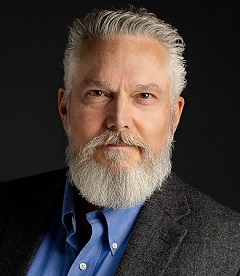Resolving "High Conflict" (and how doing so can help prevent workplace violence)

"HIGH CONFLICT... A conflict that becomes self-perpetuating and all consuming, in which almost everyone ends up worse off."
If there was ever a time for us to be collectively mindful of this "mysterious force that incites people to lose their minds," as Amanda Ripley describes it¹ , it is now.
Fortunately, there are some pragmatic and elegant ways to help avoid the cognitive pitfalls that happen as our focus narrows and our rational thought processes devolve into a kind of black and white interpretation of facts and events that ultimately results in an "us-versus-them" scenario.
But like most things involving the complexity of human behavior, it requires both a mindset AND a language.
- The mindset is one of EMPATHY; intentionally seeking to understand and share the feelings of another. This reaches to a universal human need to be heard and understood.
- The language comes through a series of questions designed to broaden perspective and reach to a deeper awareness of motivations and deeply held beliefs that are likely driving behavior.
As we look for ways to understand this issue more comprehensively, it’s helpful to have a mental framework to orient and guide our efforts. Fortunately, Amanda Ripley has given us a cognitive map based on her exploration of the field of conflict mediation. I’m enthusiastic about her research since it integrates so well with our efforts geared toward verbal de-escalation.
As I’ve mentioned in a previous post, our goal with respect to the future of workplace violence prevention, is to keep pushing prevention further and further “upstream.” Ripley’s work in bringing the ideas of conflict mediation to the general public will, in my mind, not only help to further inform the general populous about a complex topic, but can also introduce a new and powerful language that might help cool heated encounters between individuals, and perhaps even catalyze some much-needed dialogue between broader groups that find themselves at odds with one another. This would have a stabilizing effect in the workplace, enhancing safety and security, while also positively influencing organizational culture.
Interestingly, the framework I’m presenting here is a synthesis of an experiment carried out by the Solutions Journalism Network (SJN), an organization committed, in part, to broadening the dialogue surrounding the complex issues of our day.
SJN brought two dozen seasoned journalists together with two conflict mediators for a two-day workshop. The goal was to enhance the reporters’ ability in covering contentious issues by asking more curious questions… and listening for honest answers. The result was that the group found themselves working inside various constructs committed to what’s essentially known as “active listening;” that is, listening with an intent to understand vs. with an intent to simply respond.
Following the exercise, the journalists and mediators synthesized their work into the following five major areas with associated sample questions. This is an excellent summary that’s not only informative, but has immediate, pragmatic value. The fact is, any of us could put this mindset and language to work instantly within our own personal and professional lives.
Healthy conflict OR corrosive "high conflict?"
High Conflict isn’t just something that’s relegated to complex social struggles like racism and climate change. It can also emerge and intensify in organizational settings, and even between individuals. Who hasn’t struggled with an “us-versus-them” situation at work where there can be intense disagreements related to limited resources or strategic priorities?
How do we recognize the difference between good, healthy conflict and the corrosive and destructive form we call high conflict? Our related post, Is My Conflict a "High Conflict?" contains 11 questions that can help determine the extent to which you may need to engage in the 5 conflict resolution steps described here.
Here’s what they developed:
Recognizing the potential for, or the emergence of, High Conflict can go a long way toward averting a a resolution stalemate -- or worse, an intellectual and emotional stagnation that ultimately erodes from “win-win,” to “win-lose,” and finally to “lose-lose.”
Learning how to stay inside of complex issues and the heated conversations that often go with them is hard work, but it’s imperative in finding new and creative ways forward. It’s also vital to developing and nurturing cultures of dignity and respect, which leads to safe ones as well… and that’s a “WIN” for everyone.
~ Heart and courage.
James
 James Sporleder has more than 25 years' experience in the security industry. With a unique background in specialized captivity survival, James has trained thousands of US military personnel from one of the most elite units in the US Department of Defense. He’s worked in the corporate arena for more than 17 years, focusing on the development and implementation of specialized training programs and helping more than 50 percent of the Fortune 100 prepare for and respond to emerging challenges related to workplace violence, intimate partner violence, and extreme violence such as active shooter.
James Sporleder has more than 25 years' experience in the security industry. With a unique background in specialized captivity survival, James has trained thousands of US military personnel from one of the most elite units in the US Department of Defense. He’s worked in the corporate arena for more than 17 years, focusing on the development and implementation of specialized training programs and helping more than 50 percent of the Fortune 100 prepare for and respond to emerging challenges related to workplace violence, intimate partner violence, and extreme violence such as active shooter.
¹ High Conflict, Why We Get Trapped and How We Get Out, Amanda Ripley, 2021, Simon & Schuster
² Internet; Solutions Journalism Network, 22 Questions that ‘Complicate the Narrative’; Conversation techniques, interview questions, and stellar story examples born from a conflict mediation training - for journalists; Feb 11, 2019; https://thewholestory.solutionsjournalism.org/22-questions-that-complicate-the-narrative-47f2649efa0e




